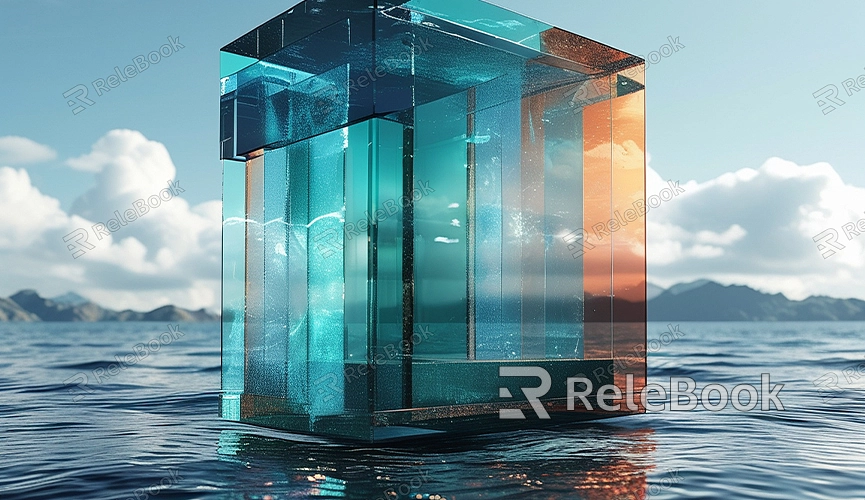How to Make a 3D Model in Unity
Unity, a powerful game development engine, is not only used for creating games but is also widely applied in virtual reality, augmented reality, and animation production. Creating 3D models in Unity is an engaging and practical process. Whether you’re designing game characters, environments, or objects, mastering 3D modeling techniques will help you bring your creative ideas to life. This guide will walk you through how to make a 3D model in Unity and offer some useful tips.
Choosing the Right Modeling Tool
While Unity provides some basic 3D modeling tools, such as cubes, spheres, and planes, these are suitable for simple shapes. For creating complex 3D models like characters, buildings, or intricate mechanical structures, it’s best to use professional 3D modeling software such as Blender, Maya, or 3ds Max.

These tools allow for detailed control over every aspect of the model. You can create highly complex geometries, adjust polygon counts, and add textures. Once modeling is complete, you can export your model in FBX or OBJ format and import it into Unity.
Importing 3D Models into Unity
After completing your model, you need to import it into Unity. Here’s how:
1. Open Unity and create a new project.
2. In the Project view, locate the model file you want to import (usually in FBX or OBJ format) and drag it into the “Assets” folder.
3. Unity will automatically import the model and generate the corresponding materials and textures.
4. Drag the model into the Scene view to start further editing and adjustments.
You can scale, rotate, and move the imported model as needed. Unity also allows you to add animations, physical properties, and other features to enhance the model’s interactivity and functionality.
Adding Materials and Textures to Your Model
Materials and textures are crucial for enhancing the visual appeal of 3D models. Unity offers a variety of material options, allowing you to apply different surface qualities like metal, wood, or plastic. Textures are also essential for creating realistic models. You can paint textures in your modeling software or use high-quality texture resources.

If you need high-quality 3D textures and HDRIs for creating models and virtual scenes, you can download them for free from [Relebook](https://textures.relebook.com/). For exquisite 3D models, visit [Relebook](https://3dmodels.relebook.com/) where a wide range of premium resources is available. These resources can help you achieve more realistic effects in your projects.
Adding Animation to Your Model
Animation is key to bringing 3D models to life. In Unity, you can use animation tools to add simple or complex movements to your model. For example, you can add walking, running, and jumping animations to a character or rotation and movement effects to a mechanical model.
Here’s how to do it:
1. Select the model and open the “Animator” window.
2. Use Unity’s Animation Editor to create animation clips, setting the positions and states of keyframes.
3. Use the “Animation Controller” to link different animation clips and set conditions for animation transitions.
This process allows you to create smooth animation transitions, making the model’s movements more natural and fluid.
Optimizing Your 3D Model
Optimization is a crucial step in the 3D modeling process. While high-quality models look great, having too many polygons or excessively high-resolution textures can decrease performance, especially on mobile devices. Proper optimization ensures that your model performs well across different devices.
Here are some optimization tips:
- Reduce Polygon Count: Use simplified geometries, especially for distant or secondary objects.
- Optimize Textures: Avoid oversized texture files and use UV mapping to efficiently allocate textures.
- Bake Lighting: By baking lighting, you can reduce real-time lighting calculations and enhance rendering efficiency.
Exporting Your 3D Model
Once you’ve completed your 3D model in Unity and adjusted materials, animations, and optimization settings, you can export the project as a game, application, or video. Unity supports export to various platforms, including Windows, macOS, iOS, Android, and more. Choose the appropriate export option based on your project requirements.
The export process is straightforward, with Unity’s “Build Settings” interface guiding you through all the steps. After selecting the target platform, click the “Build” button, and Unity will automatically package your project into an executable file or installer.
Creating 3D models in Unity is not difficult, but it requires some experience with modeling and engine use. By leveraging professional modeling software to create complex models and importing them into Unity, you can produce 3D objects that meet project needs. Adding materials, textures, and animations is also crucial for enhancing model quality.
Additionally, optimization and exporting are the final steps to ensure that models run smoothly on various platforms. Proper optimization not only improves project performance but also provides a smoother experience for users.
If you need high-quality 3D textures and HDRIs for your models and virtual scenes, download them from [Relebook](https://textures.relebook.com/). For exquisite 3D models, visit [Relebook](https://3dmodels.relebook.com/), where you can find a wealth of premium 3D resources.

